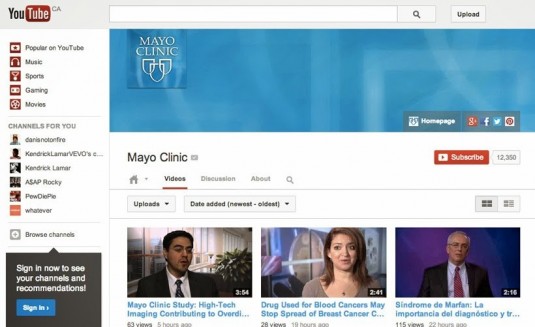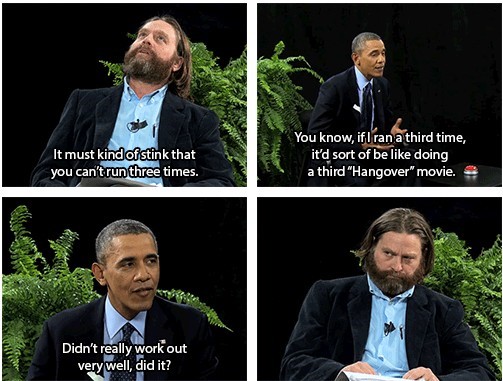YouTube for Healthcare Marketing
 YouTube is one of the most all-encompassing websites on the Internet today. It’s a practical and free tool those in the medical world need to begin using now. Doctors, hospitals, scientists, researchers and non-profits can all gain loyal patients, donors and customers by using YouTube.
YouTube is one of the most all-encompassing websites on the Internet today. It’s a practical and free tool those in the medical world need to begin using now. Doctors, hospitals, scientists, researchers and non-profits can all gain loyal patients, donors and customers by using YouTube.
It’s already being used in nearly every advertising campaign for every kind of product you can imagine. From toilet paper brands to television shows, they all use YouTube. Those in the medical world need to begin providing online videos for informational and entertainment purposes.
By using video, doctors can speak directly to patients, sharing information about events and more importantly patient education. You as a medical professional can answer easy questions via YouTube like, why should a person get a flu shot, should children get inoculated or is Ebola invading America? All of these questions people could Google themselves, but seeing their own trusted doctor explaining each answer gives confidence and a sense of security to the patient.
YouTube is one of the biggest websites in the world, ranking as the second search engine on all of the Internet, behind Google. So the question remains why are more organizations in the medical field not using YouTube yet? Only 11% of hospitals in the United States have a YouTube channel.
YouTube is a very open and broad network of videos that can be shared and seen anywhere. This is a double-edged sword for some. Many companies, not strictly in the medical industry have a problem with YouTube’s suggested videos that pop up automatically after a video has finished. This used to be a hot button issue, particularly regarding whether or not the videos were age-appropriate. Recently YouTube has corrected this problem. Users can, before publishing their video, edit the HTML Code and put links into videos that they want to suggest at the end of their video. Now users have the control to suggest other videos they have published themselves or promote a sister organization.
If you’re in the healthcare industry, think about expanding your reach through YouTube. It is a completely free tool that anyone can use, but if a credible medical organization is going to use it, the videos need to be high quality and professional.
A great example of a healthcare organization that excels on the YouTube platform is The Mayo Clinic. The Mayo Clinic has videos on anything health related someone could imagine. They create videos constantly for: patient question and answer sessions, disease specific information videos, physician interviews, and even videos of various surgical procedures.

The Mayo Clinic organizes their profile with multiple playlists by subject or category. This is primarily a good tool that allows users to easily find a specific video. If an organization is planning on producing lots of videos on various subjects, playlists are a necessary part of a successful YouTube channel. Playlists are like folders on a desktop of a computer: you can name them anything and insert videos on that topic into the playlist. This is especially useful when users want to share the entire playlist.
YouTube is a great way for medical professionals to connect to their patients. YouTube gives you as a physician the ability to humanize yourself and your business, showing empathic, educational and communicative abilities. YouTube is a wonderful tool to use to educate your patients. It is being used in schools across the world to educate people young and old. Haven’t you ever searched for how to do something on YouTube? There’s a reason that there are 925,000 videos on YouTube showing step by step how to tie a necktie; people learn through seeing and hearing. So if you are trying to educate patients about back pain, exercise or diabetes, YouTube is a great way to share information, and it gives the patient the ability to come back and watch it again.
For a significant number of people and companies, the goal of participating in YouTube is to go viral. Most things that go viral on YouTube are not patient education videos, but if you are creative in your production, you could still gain hundreds or thousands of viewers. One of the most successful viral campaigns related to healthcare can be traced back to President Obama. When The Affordable Care Act AKA ObamaCare came out, there was a video released on YouTube called “Between Two Ferns.” It starred President Obama and comedian Zack Galifianakis. 
The President was horribly criticized on the Internet and on cable news programs for doing the show. Unbeknownst to the media personalities at Fox News and CNN, the publicity they were giving President Obama and the video did exactly what the Presidential Administration wanted: it made the video go viral, and directly promoted millennials to the HealthCare.gov website, so they could sign up for health insurance.
Now, most likely, a normal hospital or physician’s office is not going to get the national publicity of President Obama, or have a celebrity comedian star in their videos, but that doesn’t mean that going viral is out of the question. If you are creative in how you record your video and have something unique and catchy in it, it very well could. MedPage Today suggests: “Have some fun and send a message.” A local Pittsburg hospital did just that with a video parody of a Taylor Swift song specifically about Emergency Room Opioid prescriptions. This is just one of the thousands of examples that someone can find on YouTube of successful, smart and creative videos in the healthcare industry.
The YouTube frontier is waiting to be explored by those in the healthcare industry. What are you waiting for?
Lindsay Hickman—Content Creator



